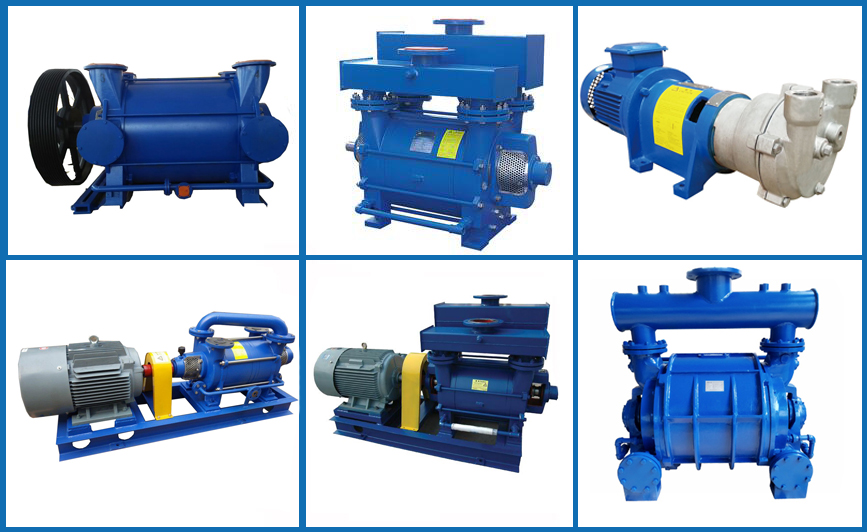Steam condensate pump
How to recycle steam condensate effectively is a problem that needs to be solved in the current production process. Customers have consulted on this before. At that time, the EVP vacuum pump manufacturer gave a plan to use the vacuum pump in steam condensate. In the production process, oxidation section, rectification section, finished product treatment section and so on, a considerable amount of low-pressure steam is needed, while some auxiliary workers in the whole production process are needed. The section needs continuous hot water tracing, and some key reactors need direct hot water participation.
The condensate recovery system recovers the high temperature condensate discharged from the steam system, which can make maximum use of the heat of the condensate, save water and fuel. It has a significant effect on saving energy and reducing consumption of factories and improving economic benefits. Condensate recovery system can be roughly divided into open recovery system and closed recovery system.
As a clean and safe energy carrier, steam has been widely used in various industries, such as power generation, petroleum, chemical industry, printing and dyeing, paper making, textile, brewing, rubber, ceramics and other industrial fields. After the latent heat of vaporization is released from various steam equipments, the steam becomes saturated condensate water at almost the same temperature and pressure. Because the use pressure of steam is greater than atmospheric pressure, the heat of condensate water can reach 20%-30% of the total heat of steam, and the higher the pressure and temperature, the more heat of condensate water, which accounts for the total heat of steam. The larger the proportion. It can be seen that the recovery of heat from condensate water and its effective utilization have great potential for energy saving.
Suitable methods should be selected according to local conditions, which not only simplifies the design of the system, but also eliminates the difficulties in operation and maintenance from the root, so that the recovery of steam condensate can proceed smoothly. The imported rotary vane vacuum pump combs and optimizes the whole production process. The steam condensate collecting device is reasonably arranged in the production workshop, and the steam condensate of each section is collected and recycled to achieve the purpose of energy saving and emission reduction. As well as the high-temperature condensate that can be discharged, the heat of the condensate can be used to the maximum extent to save water and fuel. It has a significant effect on saving energy and reducing consumption of factories and improving economic benefits.

Steam condensation pump is a part of the system, which can reduce potential maintenance problems and make boiler operation more efficient. To understand the role of steam condensate pumps, let’s see how vacuum pumps can reasonably recycle steam condensate water:
In the compression stage, all or part of the vapor condensable in the vacuum pump must also be replaced during distillation and drying. In this case, opening the ballast valve helps to discharge steam through the pump without condensation. However, vapor compatibility is not always sufficient to prevent condensation. The mixture of condensate and oil will increase the limit pressure and reduce the lubrication ability of working fluid. These factors can lead to corrosion in the pump. Before evacuating steam, the vacuum pump must be preheated for at least half an hour with a gas column.
Higher temperature working fluid reduces condensation. Other methods of reducing condensation include obtaining only low outlet pressure and discharging condensate separately. Therefore, the condensate separator should be used at the inlet and outlet sides. Oil mist filters and vertical exhaust pipes must be used to prevent back pressure at the exit. If there is an extraction system, the export should be connected to it.
Dust, Particles and Chemicals: Under certain conditions, filters and separators can protect the rotary vane vacuum pump from wear and corrosion. Separators equipped with polyester fiber (SAS) or epoxy glass microfiber (DFT) filters can filter bonded dust. Activated carbon filter (FAK) adheres to inorganic vapor, and the filter element filling is replaceable.
Influent hydrocarbons (oil vapor) can be incinerated in a heated catalytic trap (URB) and absorbed in a zeolite trap (ZFO or ST). When saturated, they can be regenerated by baking. Condensate can be collected in a condensate separator (KAS or CT) and discharged manually.
With the continuous development of vacuum technology, vacuum pumps are more and more widely used. With the high efficiency of steam condensate pumps, we can provide you with specific solutions to meet the application needs.
(The article comes from the Internet. If reprinting is not allowed, please contact our company to delete it.)
